Did You Know?
Built in 1855, the Holy Trinity Cathedral is the oldest Protestant church in Karachi.
24°50'51.4"N 67°01'58.6"E
Built in 1855, the Holy Trinity Cathedral is the oldest Protestant church in Karachi.
The Best Time to Visit Karachi is Year long as it has bearable Cold winters and Hot Summers. However, Summers can get Hot and precautions are recommended during Daytime visits.

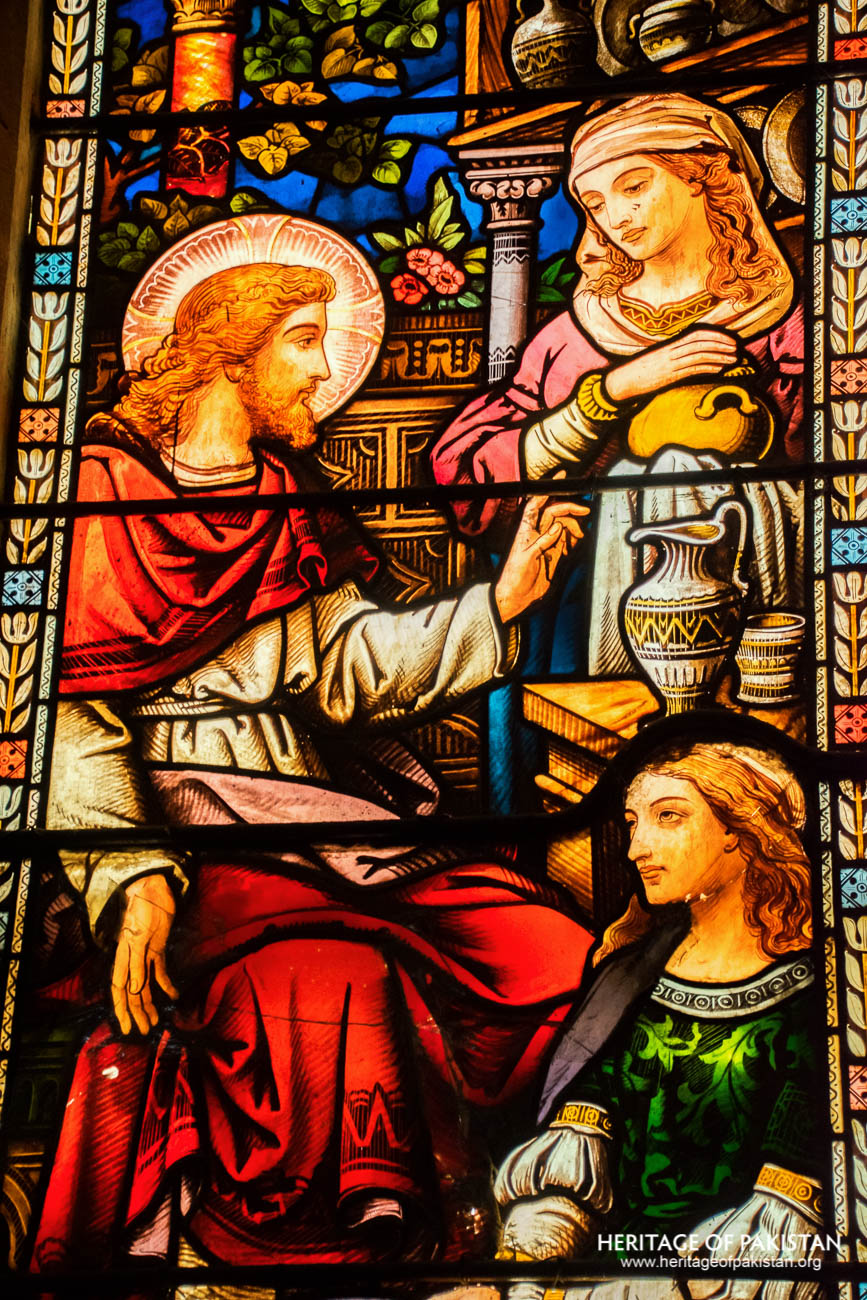
The Holy Trinity Cathedral in Karachi is the oldest and largest Protestant cathedral in the city, situated in the Civil Lines area between Zaibunissa Street and Abdullah Haroon Road, opposite the Karachi Press Club roundabout. The main entrance is located on Musical Foundation Road. The cathedral is neighbored by institutions such as Trinity Methodist High School and St. Thomas Theological College Karachi. Its historical and architectural significance, coupled with its prominent location, makes it one of the most iconic colonial-era structures in Karachi.
Construction of the cathedral began in the mid-19th century during the British colonial period. The foundation stone was laid on 9th September 1852 by Sir Bartle Frere, then Commissioner in Sindh, replacing a temporary structure previously known as "The Divine Shed." The building was completed over a span of three years and was officially consecrated for public worship on 18th March 1855. At the time, it was among the largest buildings in Karachi, with its tall tower visible from a considerable distance due to the city's limited urban development.
The cathedral was designed by Captain John Hill of the Bombay Engineers in the Italian architectural style. It was constructed using local buff-colored Gizri sandstone and funded through a government grant of Rs. 56,612. The church was built to accommodate a congregation of up to 800 people, reflecting both its role in serving the growing Christian population and its importance as a garrison church during British rule.
A notable feature of the cathedral is the stained glass installed in the apse windows. This glass was imported from London and dedicated by Francis D. Melvill, then Acting Commissioner of Sindh, in memory of his late wife. The stained glass, dated 1879, is attributed to the artist H. Hughes of London and is recognized as one of the cathedral’s most distinctive and beautiful architectural elements.
From its establishment in 1855 until the independence of Pakistan in 1947, the Holy Trinity Cathedral functioned primarily as a garrison church. It served British soldiers and sailors stationed in Karachi, who were required to attend church parades every Sunday. These parades featured military bands and were a significant weekly occurrence, reinforcing the church’s role in colonial military and social life.
In front of the cathedral, a small monument stands on the lawn. This pillar-style memorial predates the church itself, having been erected in 1849 by Sir Charles James Napier, then Commander-in-Chief in India. It commemorates officers and soldiers who died "from the effects of climate" during their first tour in Sindh in the years 1842 and 1843.

Hall of the Holy Trinity Church, Karachi, Sindh
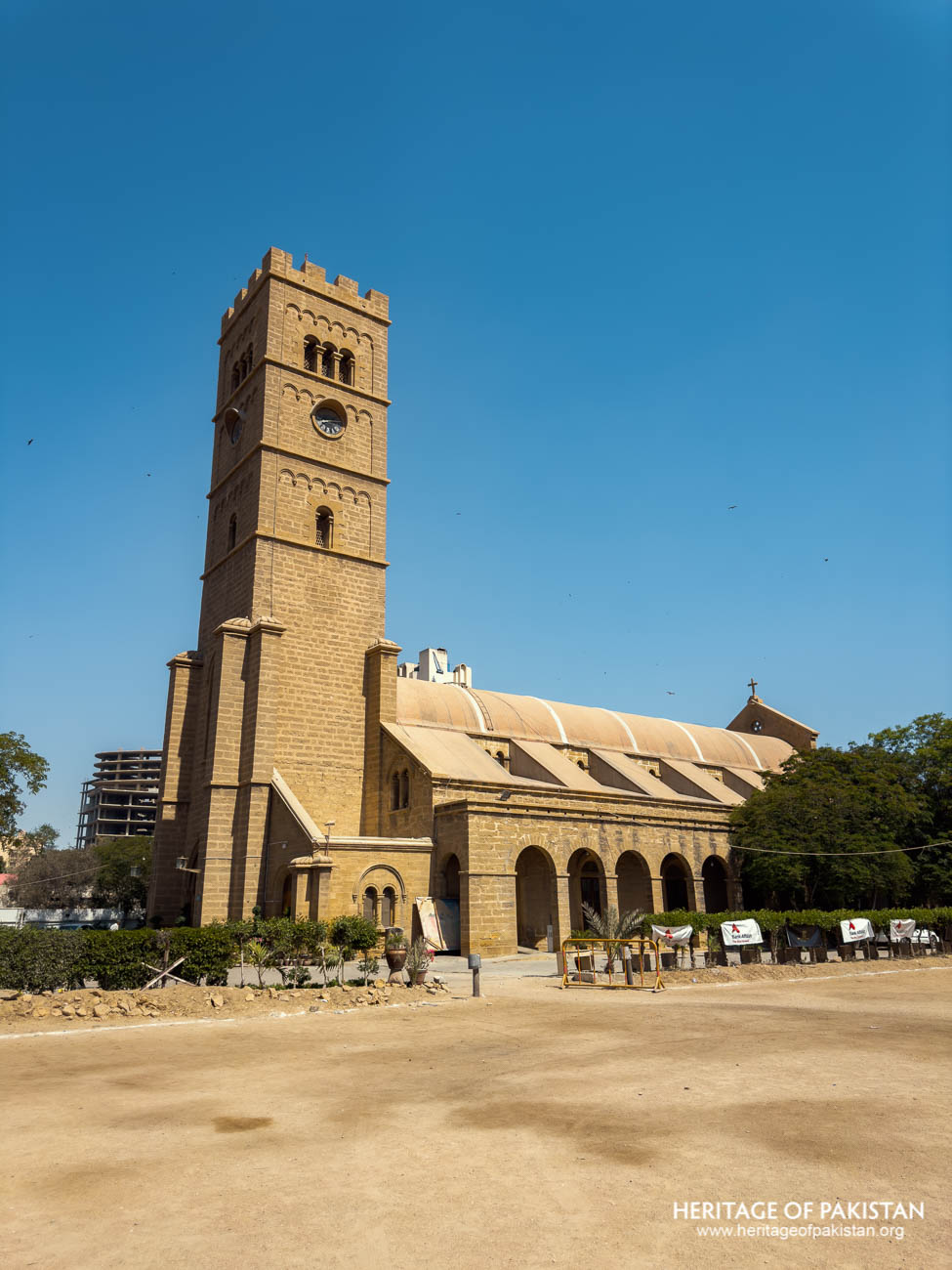
Tower of the Holy Trinity Church, Karachi
The structure underwent several modifications in the 20th century. In 1904, the height of the tower was reduced by two stories to better harmonize with the rest of the building. A clock was later installed on the tower in 1907 at a cost of Rs. 2,995. Additional facilities were developed over time, including the vicarage, which was constructed in 1911. The cathedral also hosted a service in 1935 to mark the Silver Jubilee of King George V.
One of the most historically significant events associated with the cathedral occurred shortly after the independence of Pakistan. On Sunday, 17th August 1947, the first Sunday after independence, Muhammad Ali Jinnah, the founding father of Pakistan, attended a special dominion service at the Holy Trinity Cathedral. This event was viewed as a gesture of inclusion and support for religious minorities in the newly formed state. The Christian community welcomed this visit warmly. Archdeacon Hares, who accompanied Jinnah, expressed his support on behalf of the community. The service was attended by prominent figures, including Sheikh Ghulam Hussain Hidayatullah and Sir Laurence Grafftey-Smith, the British High Commissioner to Pakistan. The event was reported in the Dawn newspaper on Tuesday, 19th August 1947.
Following independence, the administrative status of the cathedral also changed. Previously part of the Diocese of Bombay, it was transferred to the Diocese of Lahore in 1947. Later, in 1962, it was designated as a separate diocese, further highlighting its growing importance within the Church of Pakistan.
The cathedral marked its 150th anniversary on 18th March 2005, commemorating the consecration of public worship. As part of the celebrations, the clock on the tower was restored and made functional again. In 2025, the Holy Trinity Cathedral completed 170 years of service. It continues to hold a significant place in the religious and architectural heritage of Karachi and remains one of the most important cathedrals for the Christian community in Pakistan.
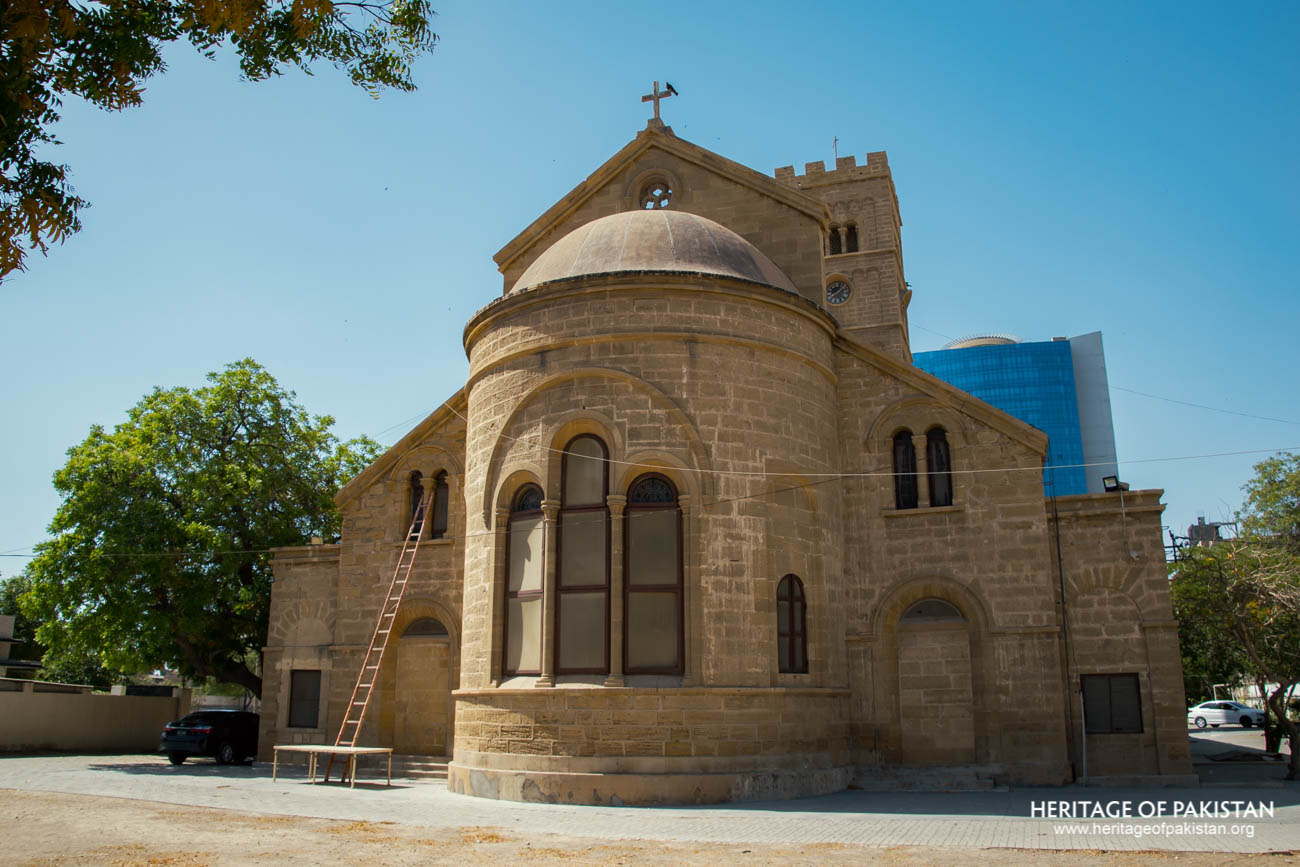 Holy Trinity Church, Karachi
Holy Trinity Church, Karachi
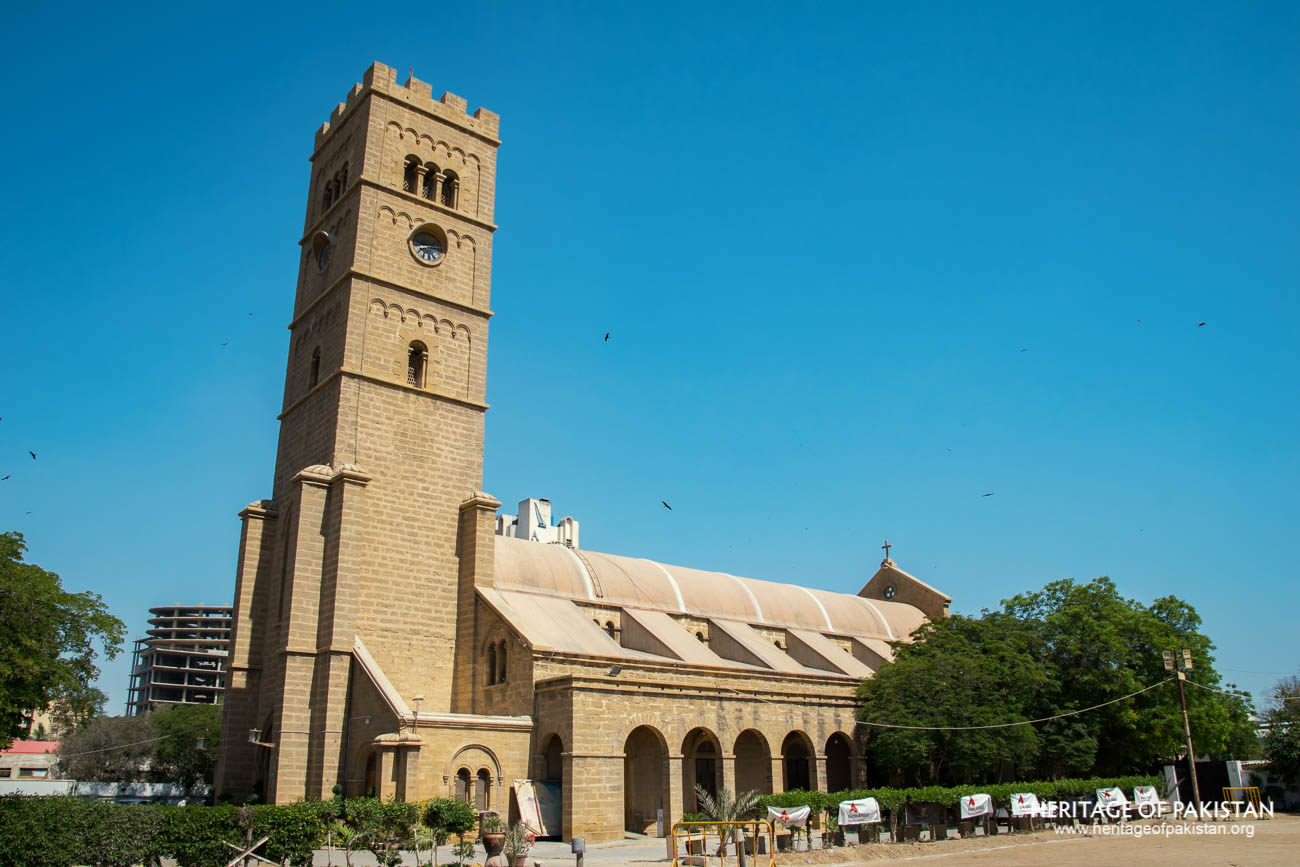

Architectural Details of Holy Trinity Church
The Holy Trinity Cathedral in Karachi was designed in the Florentine Renaissance style, influenced by Italian ecclesiastical architecture. The chosen material for the construction was the locally sourced yellowish Gizri stone, which lends a distinctive appearance to many of Karachi’s historic colonial-era buildings. This selection of material not only enhanced the structure's aesthetic but also contributed to its architectural coherence with other heritage sites in the city.
The cathedral was constructed with defined proportions, with the main hall measuring 115 feet in length, 58 feet in width, and 44 feet in height. The most prominent architectural feature is a square tower, rising to a height of 150 feet. This tower remains one of the most recognizable elements of the building. During the colonial era, due to a lack of dedicated lighthouses, tall church towers were often funded on the condition that beacons would be installed at their summits to serve as navigational aids. It is likely that this context influenced the construction of the cathedral’s notably high tower.
The seating capacity of the cathedral was designed to accommodate approximately 800 individuals, enabling it to host large congregational gatherings. Architecturally, the church structure comprises two main elements: a rectangular hall and a tall tower. The hall provides the horizontal mass of the structure, while the tower contributes to its vertical emphasis, resulting in a composition that is both grounded and elevated in form.
The tower is structured in four levels. The lowest level is slightly elevated compared to the rest of the building. The top level is designed with straight merlon and crenel-like elements, reminiscent of defensive castle bastions. This level features three windows on each face, providing symmetry and ventilation. The second level from the top houses the clock, displayed on all four sides. The clock features Roman numerals and a protruding shade above each face. The third level is more reserved, with a single window placed on each face of the tower.
Flanking both longer sides of the main hall is a corridor with a series of arched openings along the outer wall. These arches follow a semi-circular Romanesque design and contribute to the building’s stylistic consistency. Similar arches are used for various entrances into the main hall, reinforcing the architectural vocabulary.
The interior of the cathedral is designed as a tall, grand hall. A significant change to the structure was implemented in 1974, when the original timber-framed pitched roof was removed due to damage. It was replaced with a reinforced concrete barrel vault roof. The new design incorporated waffle slabs, which added both structural integrity and visual texture to the ceiling. This restoration project was carried out by ZOR Engineers.
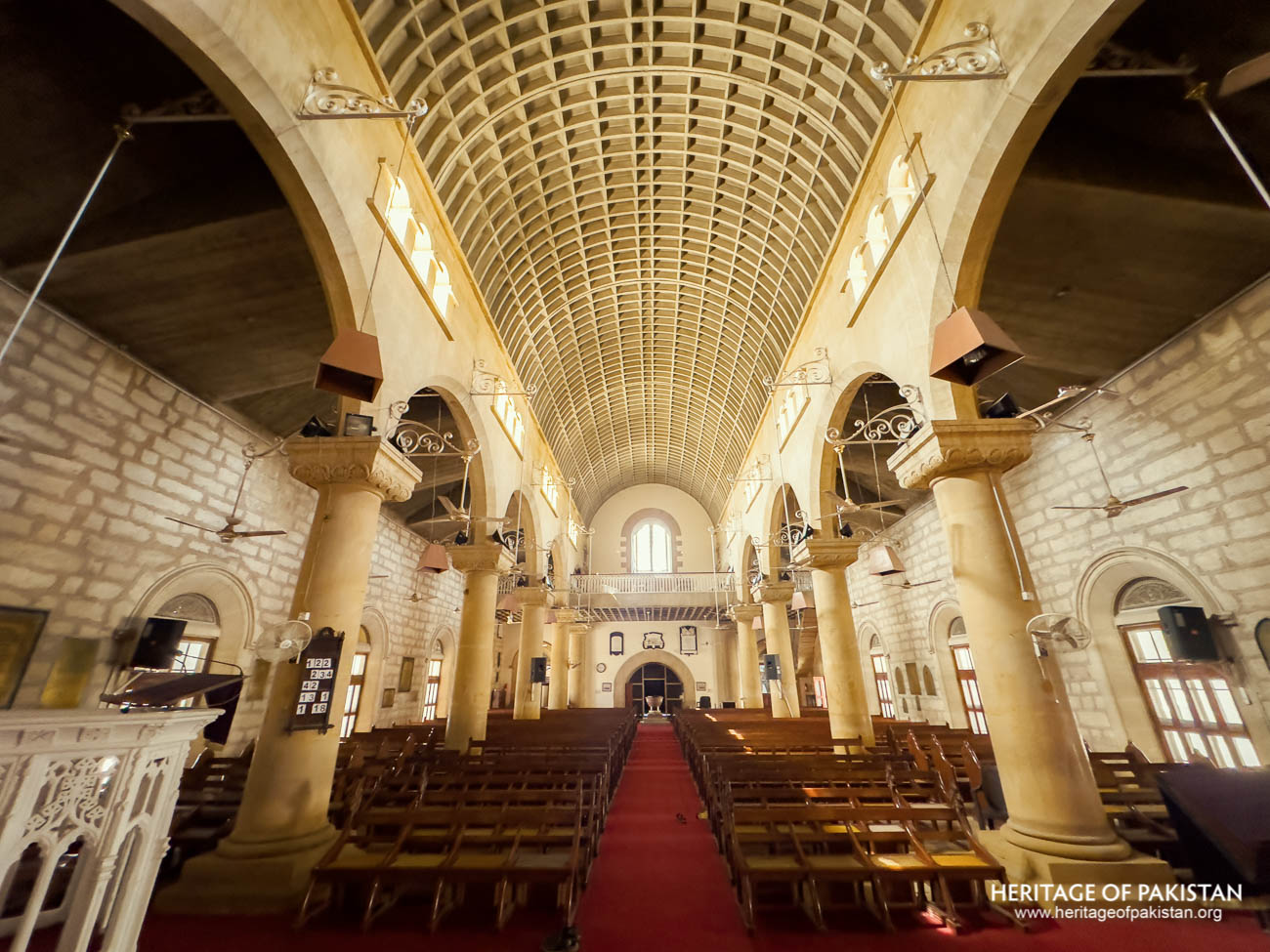
The roof is supported by a series of large semi-circular arches that run along the length of the hall, each resting on substantial circular columns. These elements work together to support the roof and maintain spatial rhythm throughout the nave. Wooden pews are arranged in rows to seat attendees, aligned along the length of the nave. At the entrance of the nave, a small baptismal font is placed, intended as the receptacle for water used in the Christian sacrament of baptism.
Among the most refined features of the church are the stained glass windows located at the back of the apse. These three elongated vertical windows are housed within semi-circular arches, with the central window slightly taller than the two flanking ones. The stained glass is attributed to the late Victorian period and, according to Ruth M. Bavington, serves as an example of late Victorian glasswork. The windows depict various scenes from Christian tradition and enhance the liturgical focus of the apse. Their presence adds color and detail to the otherwise stone-dominated interior.
The interior walls are further adorned with various plaques, each dedicated to individuals associated with the church or its wider community. These memorial elements contribute to the historical layering of the structure, serving as reminders of the cathedral’s long-standing role in Karachi’s religious and cultural life.
In addition to the main church building, the cathedral complex includes several auxiliary facilities. These include administrative offices, a vicarage, and other supporting infrastructure. The overall site is complemented by a spacious lawn that surrounds the church, creating a sense of openness and offering space for outdoor gatherings and ceremonial events.
The Holy Trinity Cathedral, through its structure, materials, and modifications over time, reflects both the architectural and functional aspirations of its era. Its continued presence and maintenance testify to its enduring importance within Karachi’s ecclesiastical and historical landscape.
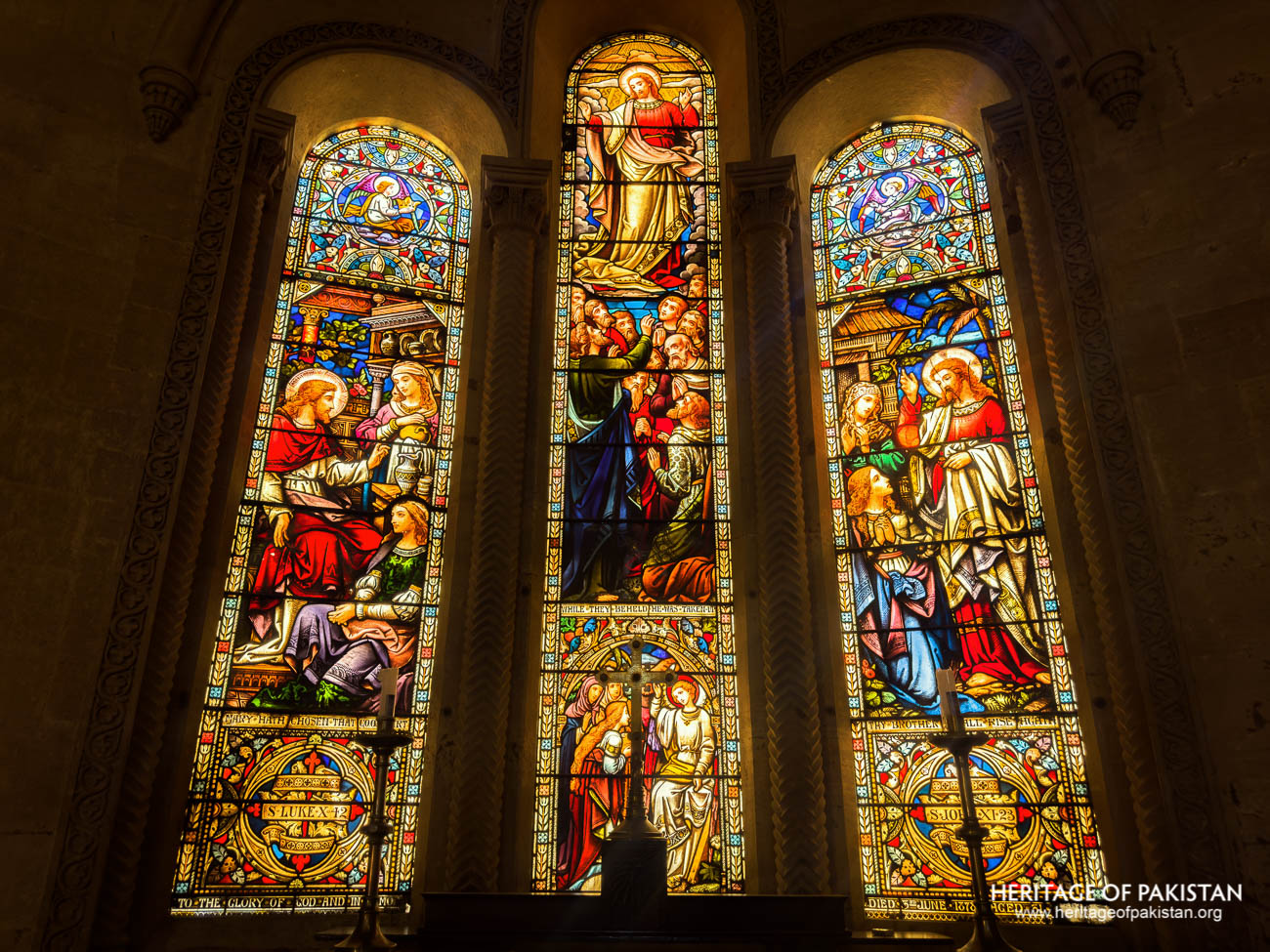


Discover the Holy Trinity Church Karachi image gallery and immerse yourself in photographs

All Photographs by Syed Noor Hussain and Sania Azhar.
All Rights Reserved. Photos may be used for Non-Commercial, Educational, Artistic, Research, Non-Profit & Academic purposes.
Commercial uses require licensing agreement.


Add a review